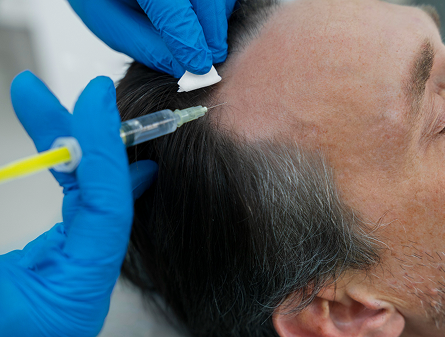Pulsed Electromagnetic Field (PEMF) therapy uses low-frequency electromagnetic fields to stimulate healing in tissues. It can help by extending the growth phase of the hair growth cycle which prevents the shedding of hair. Hair loss shampoo has the potential to help regrow your hair.
Depending on the formulation, the ingredients in hair loss shampoos are designed to help encourage growth in your hair through anti-DHT properties or blood flow stimulation. PEMF is a non-invasive topical treatment that can be done in a clinic or with an at-home device.
Hair loss shampoo is a topical treatment that should be applied regularly to see results but its effectiveness can depend on the quality and the type of hair loss you are tackling. Explore the comparison table below to see if PEMF or hair loss shampoo are the right choice for you.
- PEMF therapy uses pulsed electromagnetic waves to stimulate scalp cells, increase circulation, and maintain healthy follicles.
- It is a device-based and non-invasive treatment that causes physical stimulation of resting follicles.
- Compared to using hair loss shampoo topically, PEMF works deeper in the scalp tissue.
- Hair loss shampoo aims to cleanse the scalp and supply surface agents like caffeine or biotin.
- It encourages sanitation of the scalp and reduces shedding, but it works externally.
- In contrast to PEMF, hair loss shampoo doesn’t penetrate as deeply and may only provide temporary benefits given the short contact time.
- PEMF is an investment in a machine, which, although initially expensive, is cost-effective in the long term.
- Ultimately, it can be cheaper than continuously buying shampoo products.
- Although hair loss shampoo has a lower initial cost, it requires ongoing purchases and may become costlier than PEMF in the long run.
- Hair loss shampoos cost less per unit, but continuous purchases cost more over time than a PEMF device.
- PEMF treatments typically take 15–30 minutes and are performed several times weekly. They require consistent long-term use to maintain results.
- While this commitment is significant, the device provides deeper stimulation.
- Hair loss shampoo is quicker to use and fits perfectly into daily lifestyles.
- However, unlike PEMF, it does not have the depth of follicular activation and might not produce noticeable improvements unless combined with other treatments.
- PEMF emits electromagnetic fields that improve cellular regeneration and scalp microcirculation.
- PEMF’s deeper mechanism may lead to stronger results in follicle activation. This makes it more effective for those needing a deeper therapeutic impact.
- While hair loss shampoo can support scalp health at the surface, it does not offer the same degree of biological stimulation as PEMF.
- Hair loss shampoo delivers active ingredients externally through scalp contact, which may help maintain a clean environment, but does not stimulate cells similarly.
- PEMF is considered very safe with no known systemic or local side effects when used correctly. It doesn’t involve chemical ingredients or preservatives.
- PEMF may offer a safer and more comfortable alternative for users with sensitive skin.
- Compared to PEMF’s gentle and noninvasive nature, hair loss shampoos carry a higher chance of allergic reactions or dryness due to chemical exposure.
- Some hair loss shampoos may contain ingredients that irritate sensitive scalps, such as sulphates or fragrances, making them unsuitable for everyone.
- PEMF requires scheduled sessions with a dedicated device, which may not suit users with tight schedules.
- However, it allows targeted treatment with visible engagement.
- Comparatively, PEMF offers more involved and interactive methods with more upkeep.
- While PEMF depends on a time commitment and a device, hair loss shampoo is easy to use during showers on a daily basis.
- Hair loss shampoo can appeal more to users seeking an easy addition to simple routines.
- PEMF machines are typically purchased online or in specialised clinics
- They may require research and financial investment.
- With extensive and convenient availability, hair loss shampoos are readily available in pharmacies, supermarkets, and online.
- Lower financial investment and potentially less research required.
- PEMF can yield sustainable results with regular, long-term use, and its benefits diminish gradually if discontinued.
- Compared to shampoo, PEMF shows greater sustainability, with effects persisting longer after usage.
- In contrast, the effects of hair loss shampoo tend to be subtle and rely heavily on daily application.
- Hair loss shampoo provides surface-level maintenance, while PEMF reinforces follicle health more fundamentally, supporting regrowth.
- PEMF works synergistically with treatments like minoxidil or microneedling by enhancing blood flow and follicular activity.
- Compared to hair loss shampoo, PEMF plays a more active support role in combination routines.
- Hair loss shampoo also complements other treatments by keeping the scalp clean, but it doesn’t work as actively as PEMF.
- Hair loss shampoos can be used alongside minoxidil or finasteride to create an all-around treatment.
- PEMF offers a tech-based, hands-on experience that appeals to users interested in physical, drug-free treatments.
- Users who want a high-tech and visibly proactive approach are drawn to PEMF.
- Hair loss shampoo appeals to users seeking convenience and simplicity without committing time to a device.
- If you prioritise ease and routine compatibility, you are more likely to align with shampoo-based solutions.
- PEMF boosts scalp circulation, reduces inflammation, and encourages regeneration at a cellular level.
- These health benefits go beyond hair growth, improving overall scalp condition.
- Hair loss shampoo improves cleanliness, reduces itchiness, and can slightly lower surface DHT, but does not enhance cellular health.
- PEMF devices are reusable for years and produce minimal waste, only using electricity.
- PEMF is the more sustainable solution due to its longevity and reduced material waste.
- Hair loss shampoo generates consistent packaging waste due to monthly bottle use and often contains non-biodegradable ingredients, adding to landfills.
Shop our hair solutions
We are committed to providing affordable hair regeneration services for people all over Australia. Our formula can help you regain your confidence.
Shop Now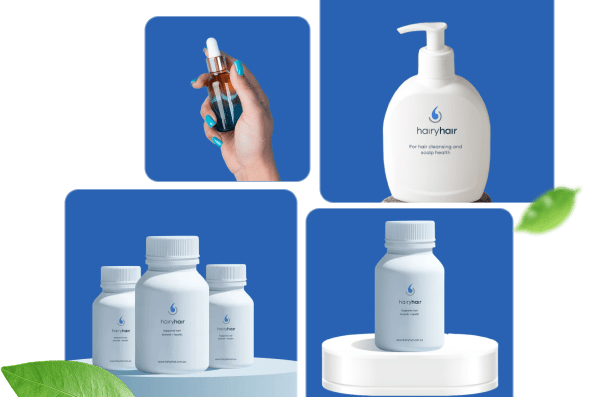

PEMF vs Shampoo Hair Regrowth Comparison Summary
PEMF therapy effectiveness can depend on the hair growth cycle of the individual with results typically being observed after 3-4 months. You can usually notice a boost in hair growth and a reduction in hair shedding.
Results can vary vastly depending on the quality of hair loss shampoo you use. For best results, you should know the cause of your hair loss and what active ingredients will be the most effective for stimulating growth and reducing shedding.
PEMF therapy sessions can be costly if you are visiting a clinic as they need to be performed once or twice a week initially before reducing frequency. Hair loss shampoo is comparatively cheaper but the effectiveness can vary based on a range of factors.
An at-home PEMF device can be a good investment in the long term but needs to be used daily and is not widely available yet. Furthermore, an at-home PEMF device will not be as powerful as a clinical-grade one.
User Guidance
PEMF treatments are considered to be safe with no side effects having been reported when used for treating hair loss. If combined with other treatments like topical solutions, you will still experience the side effects related to those medications.
Hair loss shampoos can cause side effects depending on the ingredients. Some harmful endocrine disruptors can have an impact on estrogen and testosterone levels. Certain hair loss shampoo formulations can cause initial hair loss, irritation, hair texture changes, itching, and burning.
PEMF therapy devices or clinics that support the treatment may be difficult to find considering it is a relatively new treatment. Hair loss shampoos are more widely available but it may require some research to find the right product for your hair type.
Take Our Hair Loss Quiz to See Which Treatment Suits You?
Take A Hair Quiz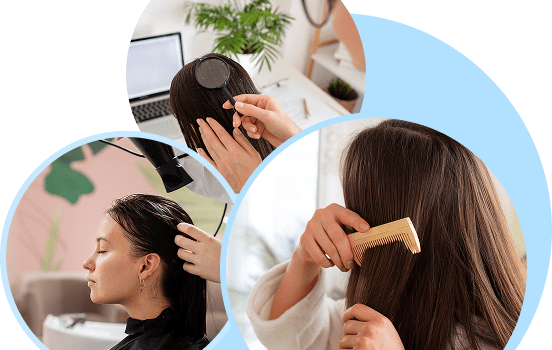

Frequently Asked Questions
We have put some commonly asked questions.
Nunc scelerisque tincidunt elit. Vestibulum non mi ipsum. Cras pretium suscipit tellus sit amet aliquet. Vestibulum maximus lacinia massa nontor.
Platelet-rich plasma (PRP) treatment involves drawing blood from the patient, isolating the beneficial nutrients and injecting it into the scalp where hair loss is occurring. This promotes hair growth and has many other applications from encouraging healing to skin rejuvenation.
Platelet-rich plasma (PRP) treatment involves drawing blood from the patient, isolating the beneficial nutrients and injecting it into the scalp where hair loss is occurring. This promotes hair growth and has many other applications from encouraging healing to skin rejuvenation.
Platelet-rich plasma (PRP) treatment involves drawing blood from the patient, isolating the beneficial nutrients and injecting it into the scalp where hair loss is occurring. This promotes hair growth and has many other applications from encouraging healing to skin rejuvenation.

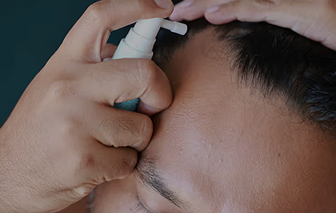



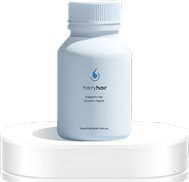
 See All
See All